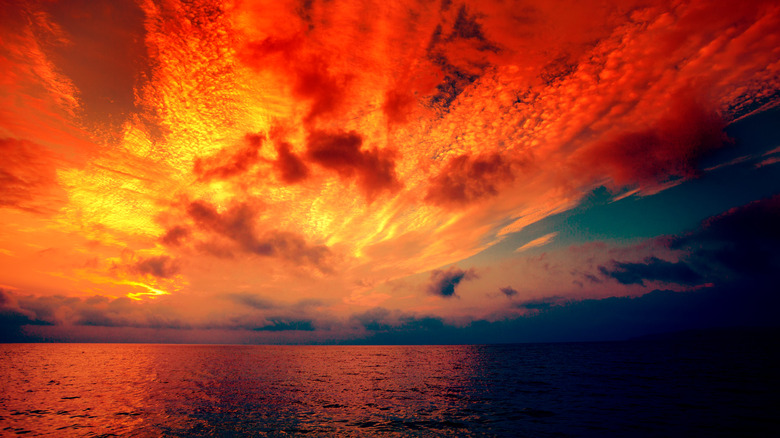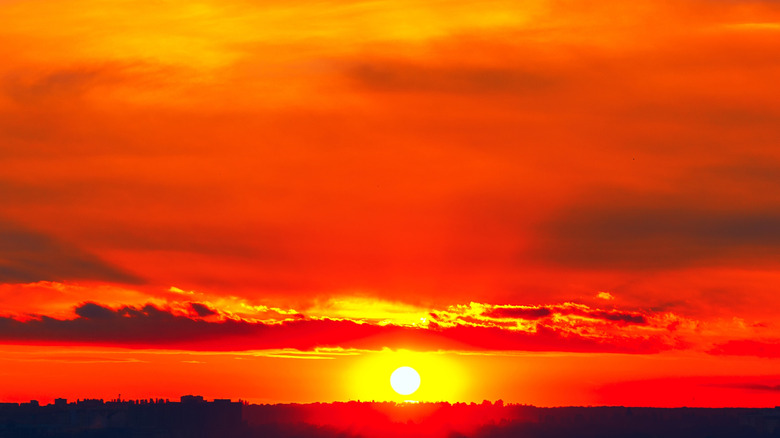The Poetic Sky Mnemonic That Could Save Your Life On Any Adventure Outdoors
What do the Bible, 1915's "The Yachtsman's Guide," and 2014 nonfiction account "Kayak Across the Atlantic" have in common? They all share the same old seafaring adage: "Red sky at night, sailor's delight. Red sky in the morning, sailor take warning." There are many variations of this mnemonic device, but the general meaning is the same. If you see the sky turning red at sunset, the weather will be good tomorrow. If it's red at sunrise, there's a storm coming. While it might sound like an old wives' tale, the saying actually isn't a bad guideline. Surprising as it might seem, a red dawn can indicate an incoming storm.
While you might not be trying to sail across the ocean, predicting the weather is a huge advantage if you're going to be outside. Whether you're kayaking up a wild scenic river, embarking on a long thru-hike, or just planning a weekend camping trip, being unprepared for weather conditions can lead to anything from a mild inconvenience to a potentially life-threatening situation. Your best bet is to check the local weather forecast before you head out. If there's a park ranger on duty where you're going to be exploring, check in with them. Or, if you're going to be on the water, bring a portable radio, and tune in for National Oceanic and Atmospheric Administration (NOAA) weather updates. Though you probably shouldn't rely on the color of the sunrise alone when gauging conditions, this mnemonic device can be another tool in your kit.
Why a red sky in the morning can mean a storm is coming
To understand why this ancient adage can often hold true, you have to know a little bit about weather. Weather changes happen for many reasons. As air masses move across the Earth, they can vary in pressure, temperature, and humidity. High pressure systems have fewer clouds and typically indicate pleasant weather. Low pressure systems often create clouds and rain. Each system's movements relate to wind. We might think of wind as random air blowing around any which way, but about half the people on Earth live in a zone where the wind patterns (known as prevailing winds) are westerlies. As their name implies, westerlies blow from west to east. In these areas, most weather comes in from the west and moves east, too.
If the light from the sun rising in the east shines through a high pressure system, it can appear red. So, a particularly deep red sunrise can mean the nice weather of a high pressure system is being blown away from you as a low pressure front moves in with rain. Meanwhile, a red sunset can indicate a high pressure system coming in from the west to make the next day's conditions perfect for being outdoors — whether you plan to explore a hidden California surfing haven or the rugged beauty of a quiet New York state park.

